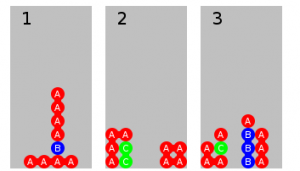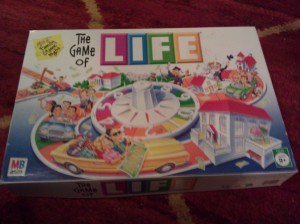Multiple Forms of Interaction in Games
Recent developments in digital game hardware allows for multiple methods of interacting with a given game. For example, the Nintendo DS incorporated the use of both a stylus-based touchscreen and tangible game control buttons. Similarly, Android and iOS games often use a combination of touchscreen controls and accelerometer-based controls.
In these platforms, there is often a moment in which players must transition from one mode of interaction to another, or use both simultaneously. I believe this transition or need to multitask a player’s mode(s) of interaction can be utilized to develop new skills.


